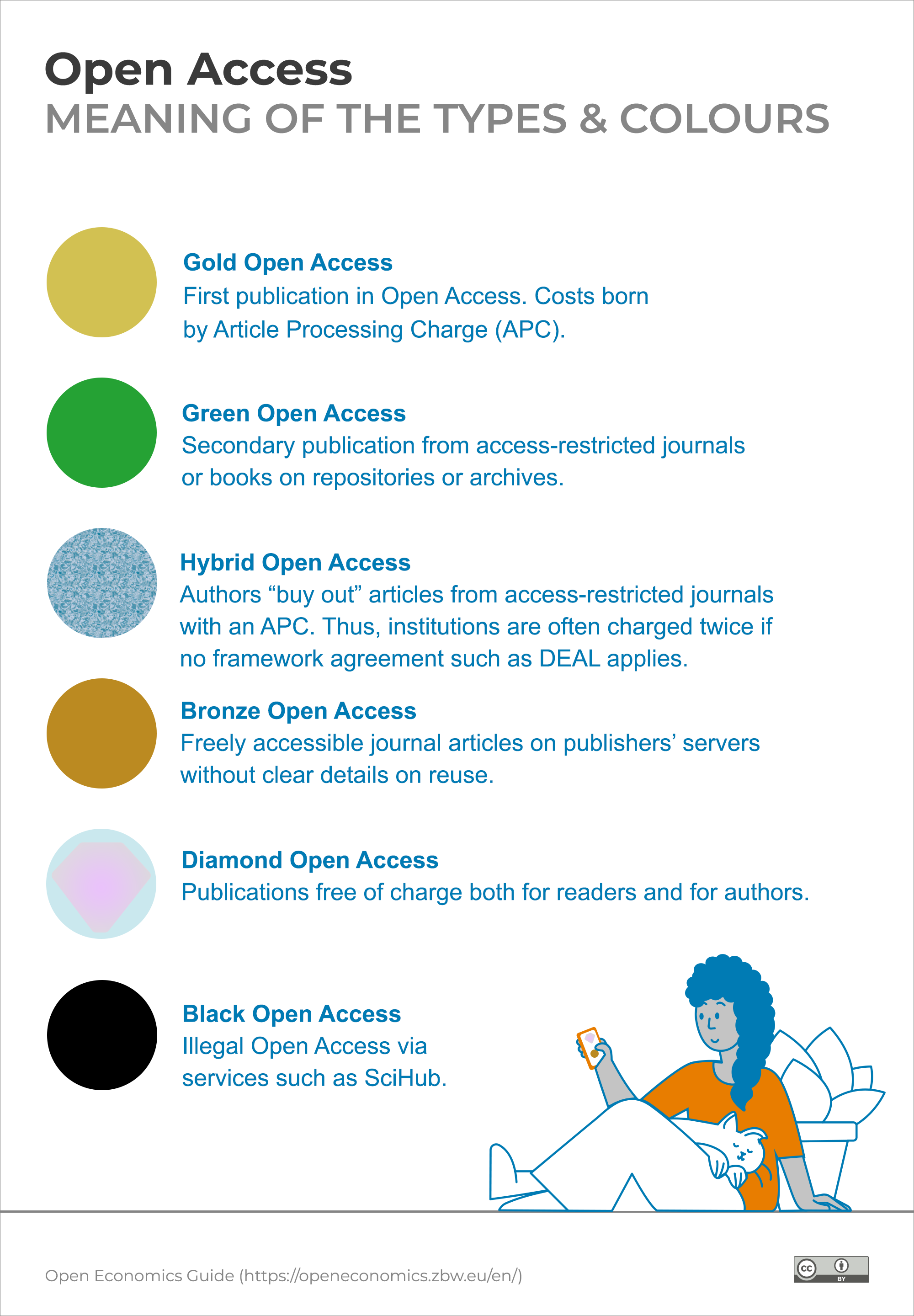The Meaning of the Different Types and Colours of Open Access
The designation for the most common forms of Open Access that you may come across are:
- Gold route (Gold Open Access): First publication as an article in Open Access journals, as an Open Access monograph or an article in a volume of collected works or a conference paper published in Open Access. The costs of publication are not born by the readers (in the scientific field, usually represented by the libraries of the scientific institution). Instead, they are born by the party producing them (for example by authors, publishing institution, publisher, research funder).
- Green route (Green Open Access): Secondary publication of publications from access-restricted journals or books on institutional or subject-specific archives/repositories. This also includes making such works accessible on authors’ websites. The secondary publication can occur simultaneously with or subsequently to the first publication (for example as a preprint or postprint to scientific articles, but also monographs, research reports, conference proceedings). In the green route, publications are often only freely available after an embargo period, depending on the different Open Access policies of the different publishers and journals.
- Hybrid Open Access: A journal is fundamentally access-restricted and/or offered on subscription basis by the publisher. However, authors can “buy out” their articles with a processing fee (APC). This fee is usually significantly higher than for a completely Open Access journal. Hybrid journals often ultimately mean that an institution is charged twice – once for access or subscription to the journal and once for the Open Access publication of the article. As a result, this business model is contentious. You should therefore consider whether it is advisable to pay these additional costs, especially since you can also publish your article via an open archive/repository. Framework agreements such as DEAL between scientific institutions and large specialist publishers for Open Access publishing in hybrid journals should be considered separately here. Here, individual authors no longer have to pay individual author fees. These framework agreements aim to transform the scientific publishing system by converting subscription journals into Open Access journals. The aim behind this is to establish Open Access to research results, as these are generally created thanks to public funding. As long as this transformation is not completed, publishing in hybrid journals is a suitable compromise for authors.
- Bronze Open Access: Freely accessible journal articles on publishers’ servers, but without clear details on reuse (mostly freely accessible archives of subscription journals).
- Black Open Access: Illegal Open Access via services such as SciHub.
- Diamond Open Access: A publication is free of charge both for readers and for authors. This refers above all to gold Open Access journals that do not demand APCs from the authors. They are widespread particularly in the humanities and social sciences.
